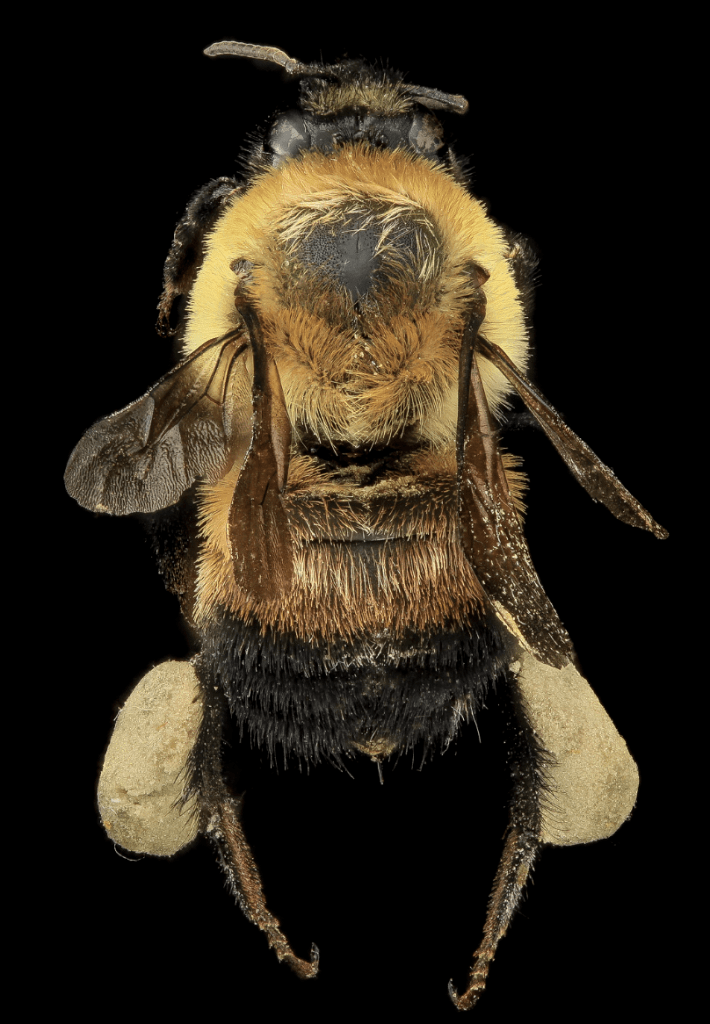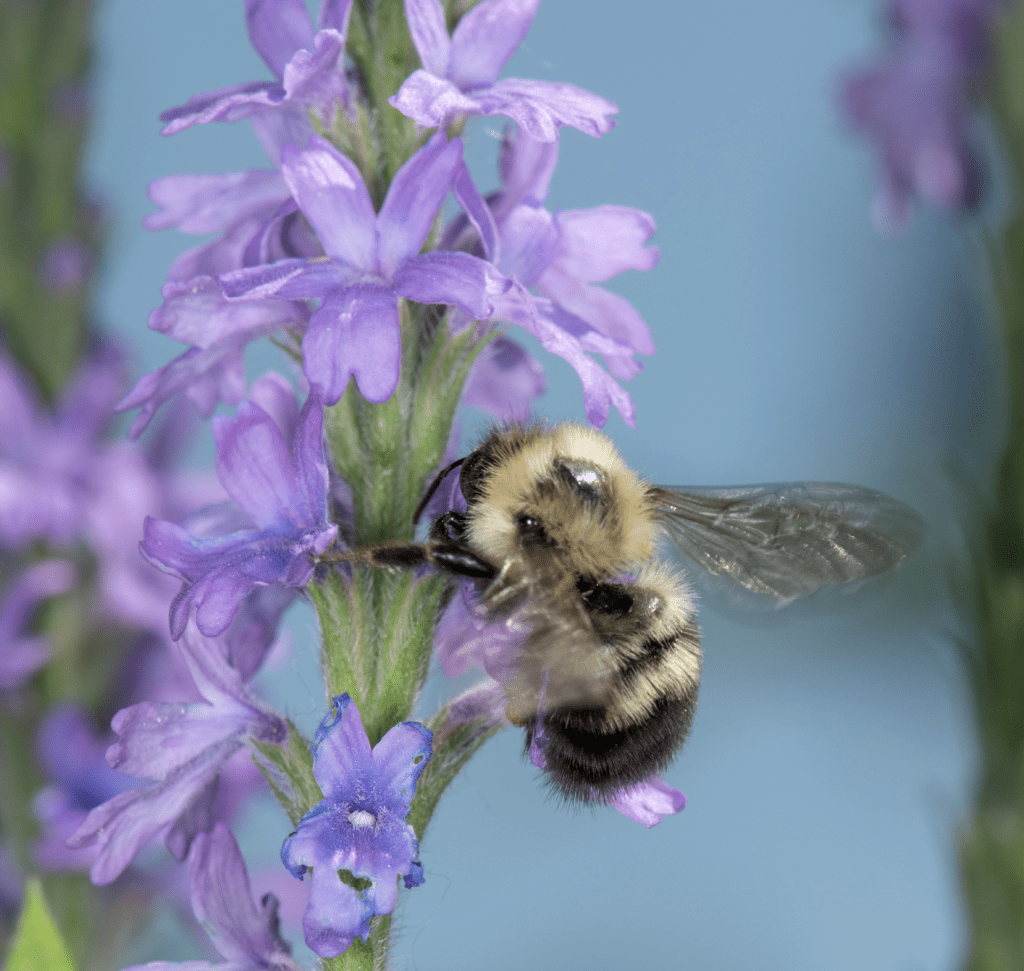Hello bumble hunters! I hope you’ve all been enjoying the warmer weather, and are getting out there to count our fuzzy friends. I’ve been having an amazing time surveying over the past couple weeks as numbers of workers are rising quickly and males are beginning to appear! Earlier in the season I was only seeing a couple bees per survey: all queens, mostly brown-belted (B. griseocollis) and two-spotted (B. bimaculatus). Now most of my surveys in good habitats have upwards of 30 bees each!

Brown belted bumble bee worker, Bombus griseocollis, USGS

Two-spotted bumble bee worker, Bombus bimaculatus, image credit: Heather Holm
In terms of survey updates, I have 3 main things. 1) small updates to the wording of the instructions, 2) A podcast feature! 3) Digital data sheets are available!
1) We revamped our description of “#lots” after receiving lots (get it!) of feedback from the training webinar. Here’s an excerpt of the updated instructions:
# Lots is a measure of floral distribution that explains if flowers are concentrated together in a small area or dispersed across your entire survey area. For # Lots, after completing a survey imagine the path you walked was divided into 25 small house lots. For each blooming plant, estimate how many of those 25 lots the species was in. If you survey a field full of clover with a single apple tree, the clover will be present in almost every lot, so it gets a high number close to 25. The apple tree sits in a small area, so it’s only in 1 lot. Another way to think about this is picturing your survey area as a monopoly board. Roughly how many squares on the board contain a given flower species?
This is a rough estimation of how spread out each flower species is, so don’t worry about determining a precise value. It doesn’t matter how much of each lot is covered by the flower species, only that the species occurs in the lot.
Thanks for all your feedback on this!
2) For a more exciting update, AABB was featured on the Backyard Ecology Podcast!
I chatted with the host, Shannon Trimboli, about an overview of the project, and some ideas relating to bumble bee floral preference. Shannon is amazing, and has put together a really nice podcast if I do say so myself! Give it a listen here if you’re interested. This conversation was super casual and not intended to train anyone on how to survey, so if you’re looking for clarification on the survey protocol, either check out the resources on our website, or shoot me an email. 🙂
3) Ask and you shall receive! Lots of people have asked for online versions of the data sheets. We came up with these Google Sheets/Excel files which you can fill in with your data. I can’t think of a reason to make fillable PDF versions as well as these, so I’m not planning to do that at the moment. If any of you have a reason why a fillable PDF is still needed, let me know and I’m happy to work on it. 🙂
I’ve been receiving tons of data from a lot of participants, and I cannot thank you enough! You all are truly an impressive group of scientists, and I can’t wait to see what we can all achieve together. 🙂
Keep up the good work, and don’t hesitate to reach out with any questions! Thank you all again!
Jenan

